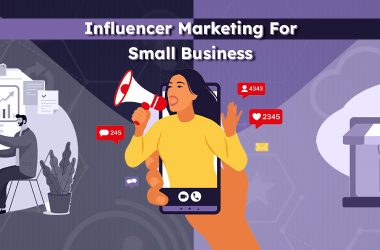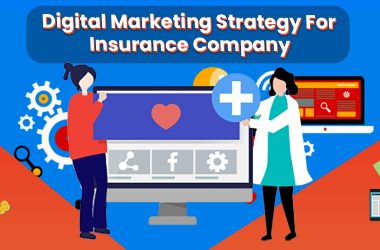Any successful business relies on qualified leads, which is why educational institutions need them even more. Schools and universities rely on new student enrollment and sustained engagement. Schools can bolster their position in the escalating rivalry if they receive a steady stream of applications. But you must first concentrate on improving lead generation for higher education if you want to enrol new students each year.
It is the goal of lead generation to pique the interest of potential students through unplanned or deliberate marketing. Candidates have more options than ever for their academic prospects as colleges invest more and more in their online presence. Your school must devise precise plans to increase its exposure across platforms and attract new audiences if it hopes to win their interest. Making it simple for visitors to interact with your institution will help you convert prospects into applicants. Take a look at some essential tactics for getting fresh leads.
Direct Visitors to Your Website With SEO
One of the most crucial tools for generating new leads is a website. Visitors will discover more about your institution there and start to show an interest in its principles and services. However, how many users actually find your website depends heavily on your ability to generate new leads in this manner. In other words, your web efforts will be useless if you don’t get enough exposure.
You may take the first step toward gaining your school’s website and its presence on search engines with the aid of a solid SEO plan. According to research, 95% of all search traffic lands on the first page of search results. Users are 10 times more likely to click on the first organic result than the tenth one at the same time. This indicates that the vast majority of Google users do not even scroll past the first page, with many simply taking into account the first five results.
Your passport to a top search result and more website traffic is SEO best practises. To start, undertake keyword research to find the search terms that your target market is using. By including those keywords into your material, you can then connect with the relevant leads for your school.
Example: In a blog post by the University Bureau, the term “finance programme” appears in the title and two other places where it is appropriate. This enhances the chance that users looking for training in this area will see the content.
Keep in mind that the information on your website represents your institution, its standing, and your ideals. Incorporating the appropriate keywords is crucial, but providing high-quality content that speaks to the interests of potential students should be your top emphasis. You can be attempting to enhance your reputation as a research institution or increase enrollment for a particular programme. Your content should always be consistent with your school’s distinctive selling propositions.
For instance, the blogs published on the website of University Bureau examine interesting subjects in architecture, engineering, and design. In addition to offering useful advice to pique the interest of potential students interested in these career options, the content demonstrates their authority as a technical design school.
The majority of Gen-Z students’ time nowadays is spent consuming digital media, whether it be on Facebook, Instagram, TikTok, or the internet. Today’s students use online resources instead of more conventional ones like attending open days or reading university magazines to research their degree possibilities. This gives university marketers a strong chance to connect with students online, where they are most active. How can educators make the most of digital marketing in light of this to make sure they are not only recruiting students but also grabbing their attention? We’ll examine the top digital lead generating tactics in this blog so you can be sure your marketing efforts are successful.
Optimize your website
Your website should be the first place you start. You first need to provide students with a place to go before you can launch marketing campaigns. Consider your website as a digital house where each page leads visitors on a different journey. An opportunity exists for your website to convert a potential student into a lead. Simply said, when a prospect progresses to a lead, it implies they are deciding whether or not your university is a suitable fit for them. However, once a prospect lands on your website, you only have a little window of time to grab their attention. Here are some strategies for getting their attention:
- Boost copywriting – Stop using stuffy, professional language, and start speaking in terms that your pupils can understand. Students may not be taking action if anything is perplexing them. Start writing in a method that demonstrates your understanding of your prospects’ needs and challenges to begin speaking in their language. This will reassure them that choosing your university is the best move.
- Clean up the design – Students of today are accustomed to skimming through captivating visuals on social media all day, so if your website uses dated designs, they will undoubtedly go. By adhering to a distinct brand style guide and making the pages simple to navigate, you may improve the design of your website.
- Improve landing pages and forms – Make sure your landing pages are clear, interesting, and direct. Make filling out forms as simple as you can.
- Include calls to action that are unambiguous – People won’t always act until you urge them to. Make sure to make it clear to them what they need do next by doing so. For instance, you may want to use the phrases “download it now,” “watch now,” or “reserve your seat” if you are promoting a checklist, a free class, or a virtual tour.
Make a live chat window
Multiple conversion touchpoints on your website should entice visitors to explore more. Give visitors the chance to speak with an admissions professional directly to create an engaging experience. Traditionally, a contact form has been used for this. Today, however, live chat rooms are gaining popularity because they give students the chance to get prompt answers to their problems. A wonderful method for institutions to engage with the younger generation is to use chat as a communication channel. Many students are used to utilising chat on platforms like Whatsapp, Instagram DMs, and Facebook Messenger in their daily lives.
Spend money on inexpensive, effective marketing tools
Educators need to always stay up to date on the newest developments in digital marketing in order to effectively reach new students. University Bureau has developed expertise in the problem of millennial student recruitment. Every action they do is planned to offer pupils a fruitful and practical recruitment experience. By utilising natural, non-branded search patterns, the innovative technique attempts to engage students as early as possible in their search for higher education. No matter where they are in the world, students may find your profile thanks to University Bureau, which makes programmes and institutions visible.
Because the meticulously and uniquely created profile pages present pertinent resources relating to their interests without any additional advertising or gimmicks, University Bureau has earned the trust of students. The organised, approachable profile will entice students to get in touch with the admissions staff, and the custom hiring process will make sure that those inquiries originate from qualified, prospective applicants.
Create a virtual tour
This year, virtual tours have also grown in popularity. 360-degree tours let visitors see the campus’s amenities and lodgings, including both students and their parents. These tours can be created with the help of software providers like 3D Vista and Easypano. The tours can either be directly linked from your navigation bar or embedded on your website. Marketers may hide these tours behind a landing page that needs visitors to enter their email addresses in order to access them in order to gather leads.
Prospective students and their parents can view an interactive virtual tour of the University of Liverpool at any time on the university’s website. Through films and pictures, they can receive a “on-campus” impression of the many school locations without physically being there.
Organize a virtual open day
Many institutions have started holding virtual open days as a result of the COVID-19 pandemic forcing educators to adapt. Open days give students the chance to interact with professors in a more thorough way than a virtual tour. Webinars, reading material, and even one-on-one conversations with academics from specific faculties are frequently included in engrossing open days. The flexibility gives event goers control over their experience, allowing them to pick and choose the encounters they have, increasing the likelihood of developing a warmer lead.
The thorough follow-up that can be accomplished by holding a virtual open day is one of the key advantages. The registration page yields contact information for participants, and you can keep tabs on those who download particular files. This makes it possible for you to offer extremely specific post-event follow-up depending on a student’s interests.
Research is advised while choosing the best website to host your virtual open day.
Strengthen the organic social media strategy you use
You can be losing out on quality leads if you don’t have a consistent social media strategy. You have the chance to promote to students there because they spend a lot of their time on Facebook and Instagram. To capture the interest of potential students, develop a social media plan that incorporates useful, entertaining, and instructional content. Making Reels is one innovative new way to use Instagram.
The most crucial thing to remember is that your social media strategy should always aim to move potential customers to the next stage of the customer journey, whether that be attending a webinar or signing up for a virtual open day. Include compelling calls to action in your Instagram posts and Instagram stories to nudge students to take the next step.
Explore lead ads
Many colleges employ social media advertisements to generate higher education leads. This approach makes a lot of sense given that 42% of millennials and 50% of Gen Z believe social media to be the most relevant avenue for advertisements. But have you yet looked at lead ads?
Lead advertising can increase your conversion rates by enabling students to submit their information to you immediately from the ad rather of having to visit another website.
Despite the fact that it appears straightforward, it is highly effective because it saves time and makes for a hassle-free experience. The user experience can be hampered by being forwarded to another page, especially if it is not mobile-friendly.
The user’s name and email are immediately filled up in Facebook lead advertising, making it even simpler for them to request a brochure or make an inquiry. All of the main social media sites, including Facebook, Instagram, Twitter, and LinkedIn, offer lead ads.
You can download a user’s response to your lead ad directly from your school’s social media account and send it to admissions. Even better, you can combine your SRM and ad accounts (Student Management System).
Leverage the power of LinkedIn
LinkedIn is very effective for promoting post-graduate programmes because there are around 645 million people who use it, and business schools like Queen’s School of Business, Ontario, frequently use it as a lead generation tool.
Experiment with content
How can you produce interesting content that is so amazing that produces leads and conversions in addition to views in the era of so much material? The key is to concentrate on forms that resonate with your target market.
It takes time to research which university to apply to and which degree to pursue, so consider how you can quickly and effectively inform prospects.
Why not incorporate tests into your plan for generating student leads?
Quizzes are interesting because they appeal to our desire to learn more about ourselves, particularly in terms of our talents and abilities. To match people to degree programmes based on their interests, you may design a quiz.
Delegate to chatbots
How can you produce interesting content that is so amazing that produces leads and conversions in addition to views in the era of so much material? The key is to concentrate on forms that resonate with your target market.
It takes time to research which university to apply to and which degree to pursue, so consider how you can quickly and effectively inform prospects.
Why not incorporate tests into your plan for generating student leads?
Quizzes are interesting because they appeal to our desire to learn more about ourselves, particularly in terms of our talents and abilities. To match people to degree programmes based on their interests, you may design a quiz.
You can easily integrate chatbots into your website and programme them to rapidly answer frequently asked queries automatically while satisfying the expectations of potential customers.
Chatbots are gaining popularity, and university-specific solutions are starting to appear.
The programme first concentrated on admissions but has since expanded to cover every phase of the student lifecycle, from a person’s initial engagement with your website through their experience as a devoted alumni.
Higher education chatbot systems can help you create a knowledge base that is particular to your institution and programmes while also allowing you to use analytics to spot patterns.
Create email workflows
According to research, 80% of consumers are more likely to buy something from a company that offers individualised experiences.
The same is true of the experience of applying to universities.
Even the warmest leads can become cold when they get generic or irrelevant information. Segmentation is the first step toward personalization, which is crucial.
Segment your email lists as finely as you can to have the biggest impact. Organize leads according to their status in the application funnel as well as their course of study or extracurricular activities.
Improve your website
The website for your school is a fantastic place to start when analysing your lead generating strategy. Your website should be among the top results on search engines if you want to direct prospects there in your marketing initiatives.
Consider your website to be your digital hub, but keep in mind that you just have a few seconds to capture the viewer’s attention.
You can do the following things to make your website a lead generator:
- Adjusting your speech tone so that you sound friendly. Always strive for clarity in communication because uncertainty can deter potential customers from taking action.
- When it comes to your website’s design, follow a brand style manual and make sure pages are simple to identify and navigate.
- Keep your landing pages and forms straightforward, interesting, pertinent, and simple to complete and submit in order to optimise them for conversations.
- To make it clear what you want visitors to do next, strategically position Calls to Actions (CTAs) on your website, such as “share immediately,” “start application,” and “watch webinar.”
- Using your SRM, develop lead capture forms for your website. Don’t forget to add people to email workflows so you can nurture them through the application funnel.
Be personable
People like a personal touch, and those who truly connect with your institution are more likely to become fully qualified leads (and ultimately graduate!).
Tell tales that give prospective students a sense of what it’s like to study with you while educating them about the principles of your university.
Your best ambassadors are your people, including your students, alumni, and staff. Encourage them to use video to tell their tales.
The typical viewer retains 95% of a message when watching a video compared to 10% when reading a text, according to studies.
Why not attempt to make the following?
An overview of a programme or campus building; an interview with a faculty member; a testimonial about the experience of an international student; a virtual campus tour; A profile of an accomplished grad.
So, the ultimate goal of all higher education marketing teams is lead generation for new ambitious students. The first phase of the strategy is when generating interest in your organisation is crucial. Today’s students rely on the internet to research, evaluate, and select their school or institution, therefore if you want your marketing strategy to be successful, you must use lead generation techniques that will yield the most returns.
But why is it crucial to generate leads for higher education?
You must demonstrate your value to potential enrollees in order to persuade them to choose your university or college. Provide examples of your USP and the opportunities that only your institution can provide the audience. You must establish connections based on their trust in order to complete this procedure.
Lead generation also enables you to distinguish between prospective pupils who are merely browsing your website and those who are genuinely interested. The analytics information from your website that describes the traffic and usage trends of visitors. Your company’s goals are translated into key performance indicators and goals inside analytics as a result.
The appropriate methods will help you generate leads for your school of higher learning so you can attract potential students depending on their needs and desires.









